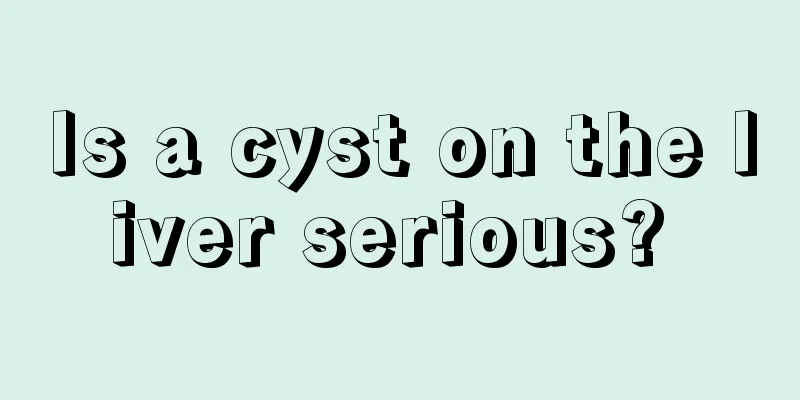What is hemolytic Vibrio?

|
Some diseases in our current life are caused by bacteria. It is precisely because of the existence of these bacteria that we don’t know how to judge bacteria. In fact, bacteria have many elements, which are composed of some bad cells. These bacteria composed of necrotic cells can cause great disruptive damage to our bodies, and they will appear in different seasons. Hemolytic Vibrio is a common one, which is mainly caused by bad eating habits or lack of personal hygiene in life. The bacteria will enter our intestines, disrupt the stomach and cause gastrointestinal dysfunction. Therefore, patients must be careful to take protective measures to avoid bacteria from invading the body for a long time, causing the body's condition to worsen and cause various complications. Basic Overview Vibrio parahaemolyticus is a Gram-negative polymorphic bacillus or slightly curved Vibrio. This bacterium is halophilic and acid-phobic. It cannot grow on a salt-free culture medium. It reproduces rapidly in 3% to 6% saline, with one cycle lasting 8 to 9 minutes. It stops growing in saline solution below 0.5% or above 8%. It will die in 1 to 3 minutes in vinegar, be inactivated by heating at 56°C for 5 to 10 minutes, and die in 5 minutes in 1% hydrochloric acid. It is known that Vibrio parahaemolyticus has 12 O antigens and 59 K antigens, which can be divided into five types according to their ability to ferment sugars. Various Vibrio species are highly toxic to humans and animals. Their pathogenic substances mainly include pyrogenic hemolysin (TDH) with a molecular weight of 42,000 and TDH-like hemolytic toxin (TRH) with a molecular weight of 48,000, which have hemolytic activity, enterotoxin and lethal effects. Vibrio parahaemolyticus During the epidemic season of Vibrio parahaemolyticus food poisoning, clinical diagnosis can be made based on the characteristics of eating suspicious foods (pickled products, seafood), collective onset, short incubation period and sudden onset, fever and abdominal pain that are more severe than other intestinal infectious diseases, bloody diarrhea, and frequent water loss. Suspicious foods can be cultured and sometimes the same Vibrio parahaemolyticus as found in feces can be isolated. This disease should be differentiated from staphylococcal food poisoning, enterotoxigenic Escherichia coli food poisoning, Salmonella food poisoning, acute bacillary dysentery and cholera. About 10 hours after eating food contaminated with Vibrio parahaemolyticus, patients will experience paroxysmal upper abdominal colic and diarrhea. Most patients will experience nausea and vomiting after the diarrhea. The diarrhea is mostly watery, and in severe cases, the stool is mucous and bloody. Severe vomiting, diarrhea and excessive water loss may cause collapse and a drop in blood pressure. Most patients recover to normal within 2 to 3 days after the onset of the disease, but a few serious patients die from shock or coma. Discovery Process In 1950, the most serious collective food poisoning incident since World War II occurred in Quanzhou, centered in Osaka Prefecture, Japan. The patient experienced severe abdominal pain and diarrhea for unknown reasons. At last count, 272 patients were poisoned, 20 of whom died. All the patients who fell ill had eaten dried herring sold by merchants in Osaka Prefecture, so the authorities immediately analyzed the batch of dried fish. However, no bacteria known to cause food poisoning were found in the dried fish. Therefore, the authorities suspected that someone deliberately mixed poison into the dried fish and investigated the incident as a criminal case. Since the Matsukawa incident, the Shimoyama incident, and the Mitaka incident, known as the "Three Major Mysteries of the Japanese National Railways," had just occurred in 1949, the public panic was caused against this backdrop. Some people believe that this mass food poisoning incident was a poisoning attempt to cause social chaos. However, no toxic chemicals including arsenic and nitrite were found in the dried fish, and the cause of the incident remains unclear. In response to this, Professor Tsunesaburo Fujiwara of Osaka University analyzed it from the perspective of unknown infectious bacteria. He used agar culture medium to cultivate bacteria and conducted animal experiments. Finally, he isolated a new species of bacteria, Vibrio enteritidis, from dried fish samples and found the cause of the food poisoning. Since this new type of bacteria was discovered by the Japanese, it caused a sensation in the Japanese medical community at the time. At that time, most Japanese scholars' concept of pathogens was still stuck in the old ideas of the 19th century; the discovery of Vibrio enteritidis shocked them. The discoverer, Professor Fujiwara, described the appearance of this bacterium as "thick and straight, constantly moving" (Japanese: ふっちょで真っ直ぐで、よく动き回る). This pathogen was very different in appearance from Vibrio cholerae, the representative of the Vibrio genus at the time, so Fujiwara believed that this bacteria should be classified as Pasteurella. In 1951, he named it Pasteurella parahaemolyticus and published it. In 1955, Iwao Takikawa, a physician at the Yokohama National Hospital in Japan, discovered the pathogen of food poisoning in pickles, which was later proved to be the same pathogen as the Osaka poisoning incident. At the same time, he also discovered that this bacterium is halophilic, so he named it pathogenic halophilic bacteria (Japanese: Pathogenic halophilic bacteria). In 1960, a number of food poisoning incidents caused by eating horse mackerel occurred in Tokyo and Chiba Prefecture, Japan. After testing, it was found that the pathogen was Vibrio enteritidis, which attracted the attention of the medical community. In response to this, the Ministry of Health, Labor and Welfare (now the Ministry of Health, Labour and Welfare, the health authority of the Japanese central government) listed Vibrio enteritidis as one of the important pathogens causing food poisoning and conducted relevant research. In 1963, Hideo Fukumi and Toshikazu Sakazaki of the National Institute of Preventive Health in Japan (now the National Institute of Infectious Diseases) proved that this bacterium should belong to the genus Vibrio and changed the scientific name to Vibrioparahaemolyticus. At the same time, the Japanese name of this bacterium was changed to Enteritidis Vibrio (Japanese: Enteroitis Vibrio), which is still used today. |
<<: Is nail disease onychomycosis? What are the symptoms
>>: What are the causes of Parkinson's disease?
Recommend
What's wrong with toothache, headache and nausea
Toothache, headache and nausea are some of the mo...
What are the harmful manifestations of osteosarcoma
What are the harmful manifestations of osteosarco...
Effects after gallstone removal
Gallstone removal surgery has been around for mor...
What is the reason for the pain in the feet
Now everyone's life is getting better and bet...
Should I use tetanus if I hit my head? Under what circumstances can you call
Many people will suffer damage to their scalp bec...
What are the complications of gallbladder cancer
In recent years, gallbladder cancer has become a ...
Multiple miscarriages increase the risk of cervical cancer
There are many causes of cervical cancer, but the...
Symptoms of mild degenerative changes in the lumbar spine
There are mild degenerative changes in the lumbar...
What are the effective ways to improve hunchback?
There are many reasons for hunchback. In addition...
Which foods are more conducive to the recovery of kidney cancer
Although the treatment effect of early kidney can...
Frequent urination and urgency belong to which department
The phenomenon of frequent urination and urgency ...
The post-care methods for nasopharyngeal carcinoma should be mastered
We all should know something about nasopharyngeal...
Symptoms of plateau hypoxia
Usually after holidays, people will travel to a p...
What are the precautions for sinus tachycardia
When the heart rate is greater than 100 beats per...
What are the symptoms of late stage nasopharyngeal carcinoma and how to treat it
What are the symptoms of advanced nasopharyngeal ...









